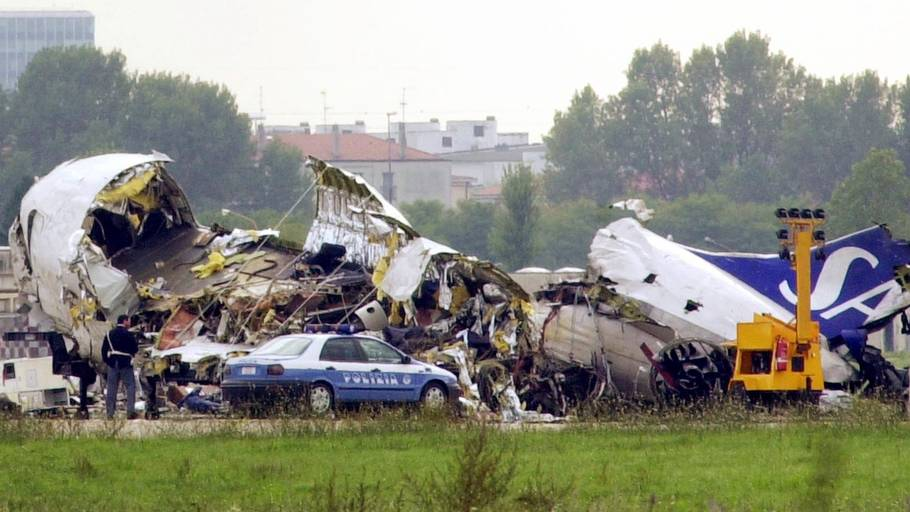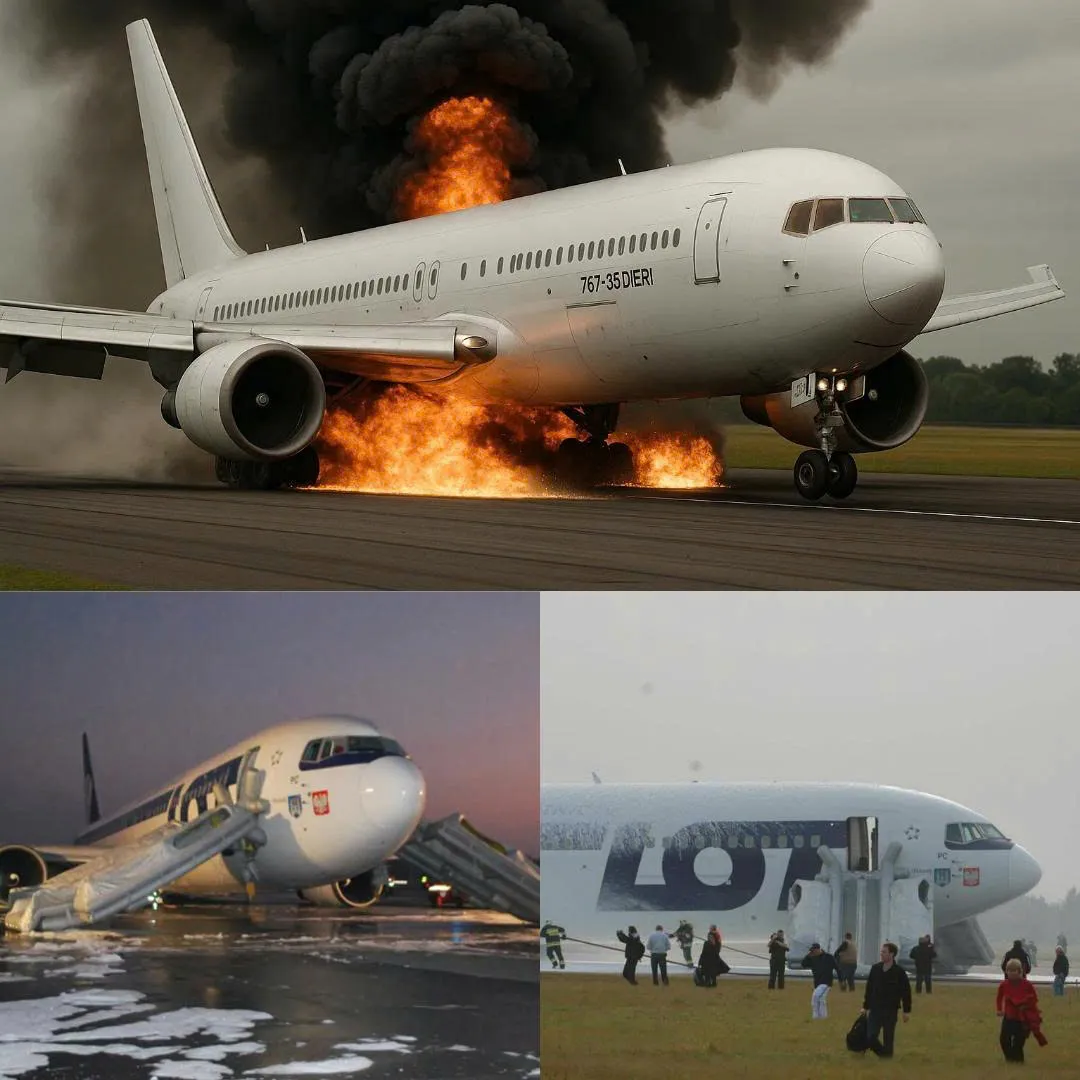
On the morning of October 8, 2001, Milan’s Linate Airport became the site of one of the deadliest ground collisions in aviation history. A Scandinavian Airlines MD-87, fully loaded with passengers and preparing for takeoff, collided at high speed with a small Cessna Citation jet that had mistakenly entered the active runway in heavy fog.
Within seconds, 118 lives were lost in a horrifying chain of events that exposed a lethal mix of outdated systems, human error, and tragic miscommunication. The disaster didn’t begin on that October morning—it was decades in the making. Linate Airport, the most centrally located airport serving Milan, had suffered years of underinvestment and patchy upgrades.
While its main runway and commercial apron had seen improvements, the western apron used by private aircraft remained neglected. Critical signs and taxiway lights had degraded, air traffic control relied on outdated equipment, and communication standards were shockingly lax. Most damning of all was the lack of working ground radar, a tool vital in low-visibility conditions like those present that fateful morning.
At 5:59 AM, a private Cessna Citation jet landed on runway 36R under Category I visibility minimums, even though conditions were well below legal thresholds. The fog was so dense that runway visual range was only around 200 meters—less than half the minimum required for that aircraft. Despite this, the Cessna landed and was cleared to backtrack and exit via Romeo 6, an uncommon taxiway with no clear signage.
Unknown to air traffic control, the pilots of the Citation had a flawed mental model of the airport’s layout. They believed they were on Romeo 5, the correct taxiway, but were actually heading down Romeo 6, which led directly to the active runway. With signs missing or mislabeled, red stop bars ignored due to procedural normalization, and control towers unable to verify the jet’s actual position, disaster loomed.

At the same time, Scandinavian Airlines Flight 686 was preparing for departure. The experienced crew of the MD-87 had been cleared by tower to taxi, line up, and await their slot window. At 6:09 AM, they received clearance for takeoff. Seconds later, while accelerating down the fog-blanketed runway, the pilots spotted a black silhouette and a flickering anti-collision light dead ahead.
In less than five seconds, the MD-87 slammed into the Citation at over 270 km/h. The impact shredded the smaller jet instantly, killing everyone on board. The MD-87, now crippled, lost its right engine and landing gear but managed to briefly lift off.
It reached a height of just 35 feet before the left engine failed due to debris ingestion. Unable to maintain flight, the plane slammed back onto the runway and skidded into a baggage handling building. The ensuing inferno claimed the lives of all 110 people aboard and four workers inside the facility.
In the chaos that followed, the tower remained unaware that a collision had occurred. Due to the fog and lack of ground radar, it took nearly 30 minutes for authorities to even locate the wreckage. During that time, radio calls were made, suspicions were raised, and fire crews launched but didn’t fully understand the gravity of the situation. It was only when another aircraft taxied past the smoldering debris that the reality of the tragedy became clear.
The Linate disaster became a defining moment in aviation safety, triggering outrage across Europe and leading to one of the most scathing accident reports ever published. Investigators found 18 major safety failures and issued urgent recommendations to overhaul Linate’s procedures, signage, and technology.
Among the worst failures was the fact that multiple languages—Italian and English—were used interchangeably in air traffic communication, creating massive room for misinterpretation.

The Citation pilots’ readbacks were incorrect and went uncorrected. The stop bar systems were dysfunctional and pilots had grown accustomed to ignoring them. The ground radar had been decommissioned years prior and never replaced. The final report laid bare a culture of complacency and bureaucratic neglect. Authorities had known for years that the airport was unsafe during foggy conditions, yet did nothing.
Just 24 hours before the crash, another near-miss involving a runway incursion had occurred. It was a miracle that hadn’t ended in disaster as well. The most tragic irony of this entire catastrophe is that the MD-87 pilots followed every instruction to the letter.
They performed flawlessly in takeoff and even after the collision, fought valiantly to control the doomed jet and steer it away from other aircraft and the terminal building. Their actions likely saved many more lives on the ground.
In the aftermath, families grieved, lawsuits followed, and Linate’s reputation was shattered. Several air traffic controllers and airport managers faced criminal trials, with some receiving prison sentences for negligence.
The disaster forced sweeping reforms not only in Italy but across Europe’s aviation industry. New regulations for low-visibility operations, mandatory ground radar, standardized language use, and stricter oversight of regional airports were adopted. The Linate Airport Disaster stands as a brutal reminder of how cascading human and technical errors can build up silently, only to erupt in one catastrophic moment.
It also highlighted how airports that seem routine on clear days can become deadly in fog, and how even experienced pilots can be led astray when the system around them collapses.
The story of that October morning in Milan is not just a tale of miscommunication and broken systems—it’s a tragedy born from years of negligence, a chilling example of how in aviation, even the smallest oversight can lead to unthinkable loss. As the world watched rescue workers sift through smoldering wreckage, the message was clear: aviation safety is not a luxury, it’s a necessity. And when that safety is ignored, the cost is paid in human lives.



